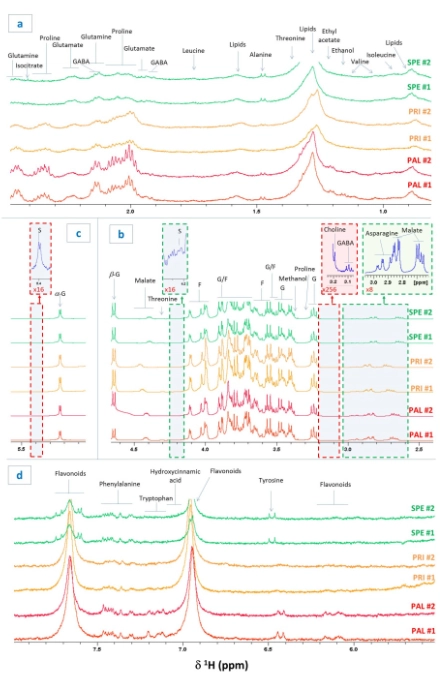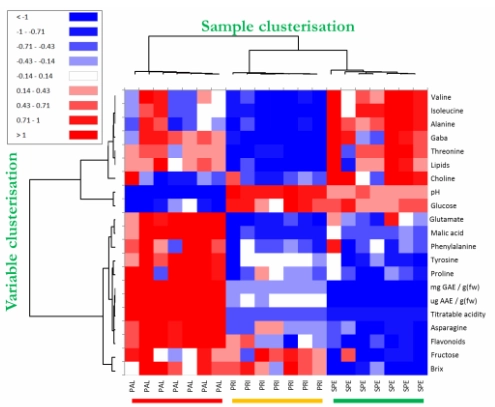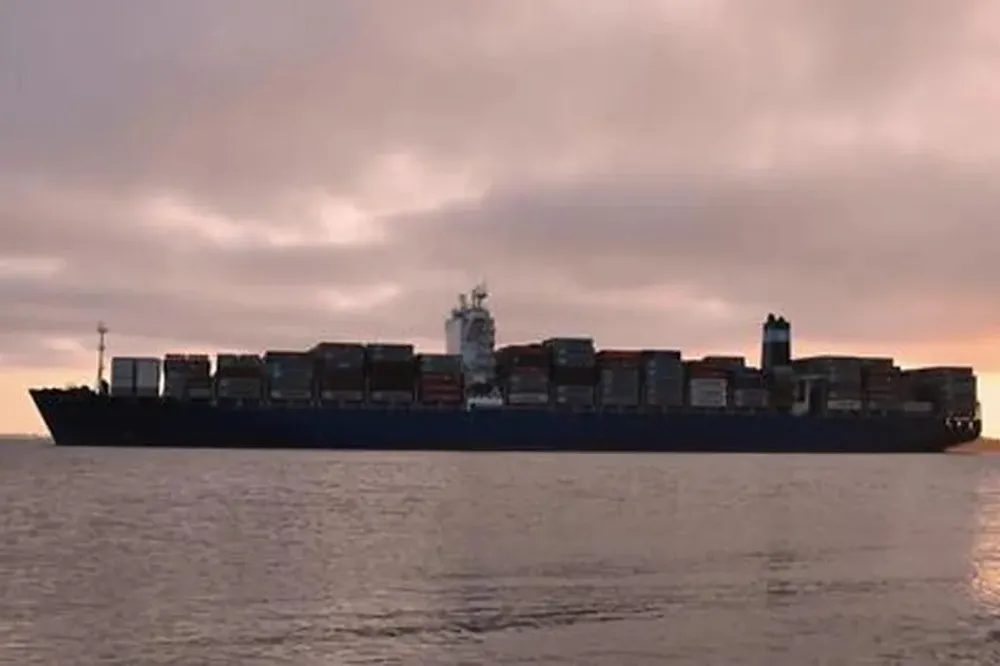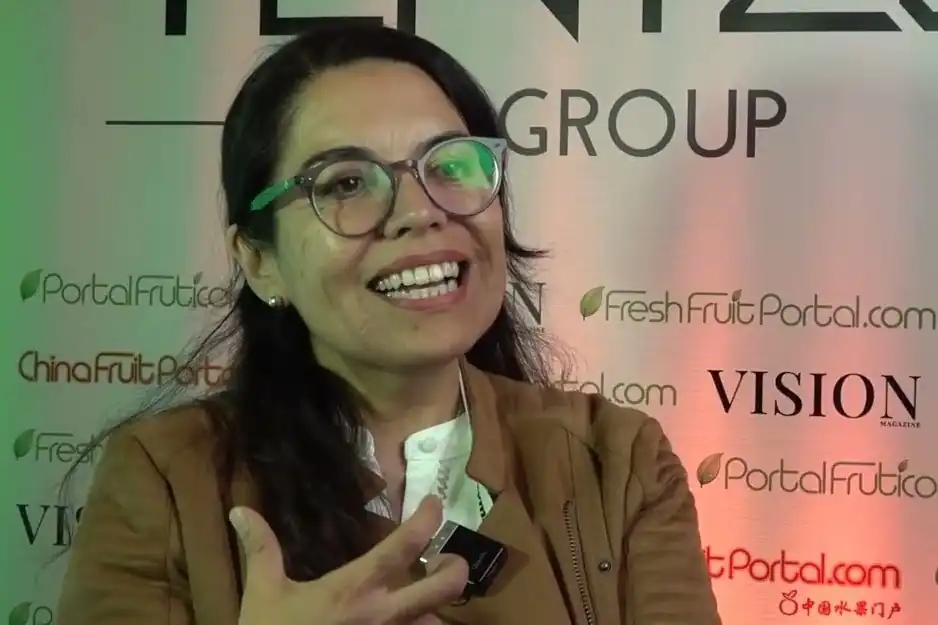Scientific research is increasingly investing in valuable food such as sweet cherries, since the consumption of high-quality products is associated with multiple health benefits.
The Campania is one of the four leading sweet cherry-producing regions in Italy, after the Apulia.
Among the various local Campanian cultivars, the Bracigliano sweet cherry stands out due to its distinctive organoleptic and productive characteristics, because of which it was awarded the prestigious PGI (Protected Geographical Indication) label in 2023.
Despite its undisputable value, until 2024, no rigorous scientific studies has been conducted to characterize key aspects of its chemical, nutraceutical, and compositional quality.
Scientific approach and methodology
These data are crucial, as they can support the valorization of the Bracigliano PGI sweet cherry as well as protect and trace them.
For the first time, in the recent study by Liguori & Mazzei (2025) it was described the evaluation of the applicability of the innovative HRMAS-NMR spectroscopic technique (High-Resolution Magic Angle Spinning Nuclear Magnetic Resonance) to analyze the molecular composition of sweet cherries.
This type of spectroscopy represents an alternative and innovative method that enables the analysis of solid, fresh, and hydrated samples without requiring any pre-treatment or costly, time-consuming, and destructive extraction procedures (which are typically necessary in conventional NMR techniques).
At the same time, it provides both qualitative and semi-quantitative information on the molecular composition of the analyzed samples.
Application to Bracigliano cultivars
Despite its great potential, this technique remains rarely applied to the analysis of agricultural and food products.
In this study, they were investigated the different cultivars of Bracigliano PGI sweet cherries Spernocchia, Pallaccia, and Principe.
All of them had been grown on the same soil and underwent identical pedoclimatic conditions.
The primary metabolome was mapped through the acquisition and interpretation of both 1D and 2D NMR spectra, both homo-correlated ( 1 H- 1 H) and hetero-correlated ( 1 H- 13 C) which permitted to identify the most abundant amino acids, carbohydrates, alcohols, and organic acids, as well as signals attributable to lipid and flavonoid molecular classes (Figure 1).
 Figure 1. 1 H HRMAS NMR spectra (several spectral regions a-d) of the Bracigliano PGI sweet cherries cultivars SPERNOCCHIA, PALLACCIA and PRINCIPE (2 replicates for typology) associated with the assignment of the most intense signals (Liguori & Mazzei, 2025)
Figure 1. 1 H HRMAS NMR spectra (several spectral regions a-d) of the Bracigliano PGI sweet cherries cultivars SPERNOCCHIA, PALLACCIA and PRINCIPE (2 replicates for typology) associated with the assignment of the most intense signals (Liguori & Mazzei, 2025)
The proton spectra revealed clear and significant differences in the primary metabolome of the analyzed sweet cherries, attributable to the specific cultivar and consistently reproduced per each variety (7 replicates per variety).
This was confirmed and validated through various multivariate statistical analyses, including PCA associated with ANOVA and PLS-DA (Partial Least Squares–Discriminant Analysis).
The NMR results were subsequently integrated with chemical and commercial quality parameters (Table 1), as well as with nutraceutical ones (Table 2).
Quality and nutraceutical results
The analyzed Bracigliano sweet cherries exhibited high-quality standards, particularly in terms of nutraceuticals content, with values often exceeding the average benchmarks.
Among all, the Pallaccia cultivar demonstrated the highest antioxidant activity, total phenolic content and titratable acidity, with mean values of 1150 µg in ascorbic acid equivalents and 1210 mg in gallic acid equivalents per gram of fresh product, and 16.88 g/l, respectively.
Tabella 1. Chemical and quality parameters of the Bracigliano PGI sweet cherry varieties Spernocchia, Principe e Pallaccia (avarages ± standard deviation, results of the ANOVA test)
pHTitratable acidity (g/L)Soluble Sugars (°Bx)Dry Weight (%)Firmness (g/cm²)Pallaccia3.35 ± 0.01 c16.88 ± 0.06 a19.78 ± 0.47 a24.07 ± 0.11 b666 ± 73 bPrincipe3.51 ± 0.01 a9.46 ± 0.07 b19.65 ± 0.30 a25.14 ± 0.56 a820 ± 83 aSpernocchia3.47 ± 0.01 b9.14 ± 0.03 c18.65 ± 0.39 b20.02 ± 0.04 c761 ± 88 ab
Tabella 1. Chemical and quality parameters of the Bracigliano PGI sweet cherry varieties Spernocchia, Principe e Pallaccia (avarages ± standard deviation, results of the ANOVA test)
| pH | Titratable acidity (g/L) | Soluble Sugars (°Bx) | Dry Weight (%) | Firmness (g/cm²) |
|---|
| Pallaccia | 3.35 ± 0.01 c | 16.88 ± 0.06 a | 19.78 ± 0.47 a | 24.07 ± 0.11 b | 666 ± 73 b |
| Principe | 3.51 ± 0.01 a | 9.46 ± 0.07 b | 19.65 ± 0.30 a | 25.14 ± 0.56 a | 820 ± 83 a |
| Spernocchia | 3.47 ± 0.01 b | 9.14 ± 0.03 c | 18.65 ± 0.39 b | 20.02 ± 0.04 c | 761 ± 88 ab |
Tabella 2. Content of nutraceutical compounds measured in the Bracigliano sweet PGI cherry varieties Spernocchia, Principe and Pallaccia (avarages ± standard deviations, results of the ANOVA test)
| Total Phenols (mg GAE/g) | Free Radical Scavenging Activity via DPPH (µg AAE/g) |
|---|
| Pallaccia | 1.210 ± 0.006 a | 1152.9 ± 2.9 a |
| Principe | 0.924 ± 0.004 b | 1110.6 ± 4.2 b |
| Spernocchia | 0.782 ± 0.004 c | 1075.8 ± 2.8 c |
All of these features enabled the identification of unique and specific characteristics of each cultivar and revealed relevant, through a heatmap cluster analysis, interesting correlations between examined variables (Figure 2).
 Figure 2. Heatmap cluster analysis of chemical, metabolic and nutraceutical features of the Bracigliano PGI cherry cultivars (Liguori & Mazzei, 2025)
Figure 2. Heatmap cluster analysis of chemical, metabolic and nutraceutical features of the Bracigliano PGI cherry cultivars (Liguori & Mazzei, 2025)
Source: Liguori. D. & Mazzei P. HRMAS NMR Spectroscopy to Identify the Primary Metabolome of Bracigliano PGI Sweet Cherries and Correlate It with Nutraceutical and Quality Parameters. Foods 2025, 14(12), 2120; https://doi.org/10.3390/foods14122120
Source figures: Liguori & Mazzei, 2025
Source images: Domenico Liguori
Dr. Domenico Liguori: Dipartimento di Farmacia, Università di Salerno e Prof. Pierluigi Mazzei: Dipartimento di Farmacia, Università di Salerno
Cherry Times - All rights reserved














